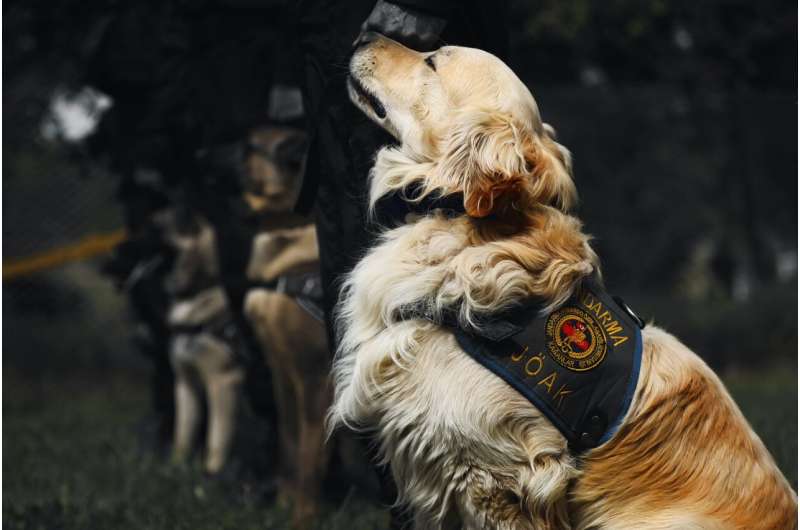Drug detection dogs often get it wrong, and it's a policing practice that needs to stop

Drug detection dogs are a policing strategy that has now been used in Australia for more than 25 years.
The stated intent of this policy was to target drug supply. However, in 2006, the showed most people detected by the dogs either had no drugs at all or were people who use drugs—not those who supply drugs.
Since that time, increasing evidence has challenged the and of this policing strategy. In addition, a of people who use drugs found Australia had one of the highest reported incidences of drug dog encounters. This occurred most often at festivals, on public transport, and in licensed premises.
In fact, policing and law enforcement, including police drug dogs operations, accounts for nearly two-thirds of Australian government spending on illegal .
Evidence suggests drug dogs do not deter people from . However, much of the evidence base for these arguments focuses on festival settings. Relatively little is known about experiences in non-festival settings and among different groups of people who use drugs (that is, those who do not typically attend festivals).
Our recent research shows police drug dogs are both an and strategy, which may carry health, social, and legal risks.
We have recently published two studies about police drug dog encounters among two samples of people who regularly use drugs. The includes interviews with people who regularly use ecstasy and/or other illicit stimulants, and the includes interviews with people who regularly inject drugs.
An ineffective strategy
We used data from our surveys with people who regularly use ecstasy to describe drug dog encounters at . This included how individuals responded to the presence of dogs and how they prepared for anticipated encounters.
We found encounters with drug dogs at festivals were common. In fact, the vast majority (94%) of those who reported such encounters said they had anticipated the presence of drug dogs. However, rather than being deterred from using or carrying drugs into the festival, participants reported taking steps to try to avoid detection by dogs.
Consistent with , those who expected to see police drug dogs at the festival described trying to hide their drugs well, or taking their drugs before entering the festival. Both of these approaches to avoiding detection have been shown to increase the risk of overdose and other , a cause for considerable concern following the at a New South Wales music festival in October.
Our findings reinforce concerns that the growing normalization of drug dogs may actually be reducing their . Based on our research, we believe drug detection dogs should no longer be used in festival settings.
An inequitable approach
In a second study, we explored encounters with drug detection dogs in non-festival settings among different groups of .
We found both samples of people commonly reported encounters with drug dogs in locations beyond festivals. These occurred most often at public transport hubs and other public places.
Compared with those who regularly inject drugs, those who regularly use ecstasy were more likely to have reported an encounter with drug dogs in non-festival settings over the last 12 months (32% and 21%, respectively). By contrast, we found people who inject drugs were over three times more likely to report being stopped and searched by police, and to experience criminal justice consequences, despite being no more likely to be carrying drugs at the time of encounter.
We cannot provide a definitive reason for this discrepancy. However, it seems plausible that it is reflective of sociodemographic differences between the two samples. That is, our sample of people who inject drugs experience much higher levels of social disadvantage and previous engagement with the criminal justice system.
Existing evidence indicates that prior interactions with police increase the likelihood of a stop and/or search encounter with . It also shows people who inject drugs often experience police harassment, violence, and . Although the latter of these accounts relate to police encounters more broadly, it could be argued that drug detection dogs are being used in Australia as tools to target, harass and criminalize the most marginalized groups of people who use drugs in society.
Continued use of drug detection dogs may exacerbate health and social harms to an already marginalized group. Such strategies are also in conflict with Australia's national drug strategy objective of , and with Australia's commitments under human rights laws to provide access to health care and to protect individuals, families and communities from .
Our findings, combined with the existing research, suggest police drug dogs are ineffective and inequitable. They should be removed from all community settings, including music festivals, public transportation hubs, and other public places.
Provided by The Conversation
This article is republished from under a Creative Commons license. Read the .![]()
















